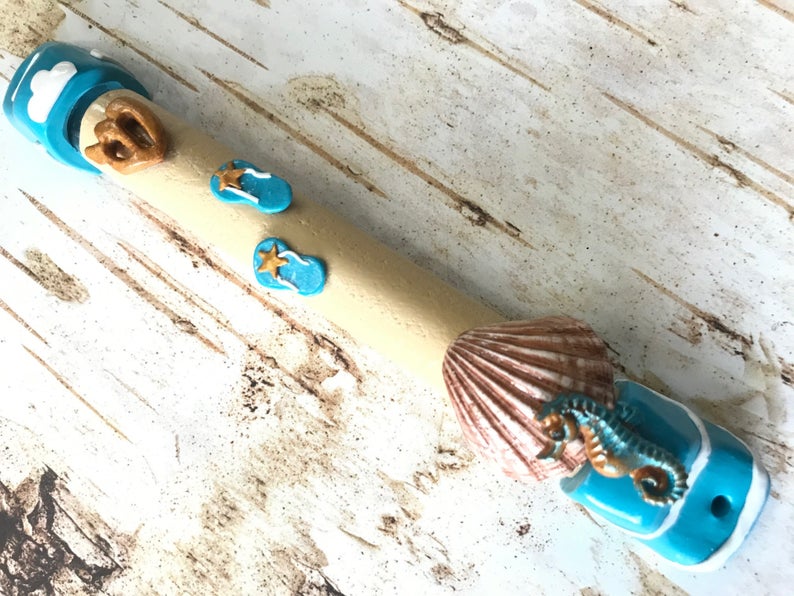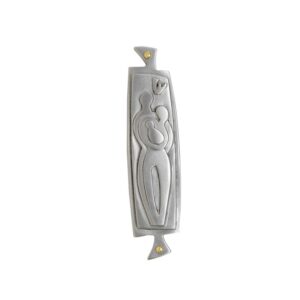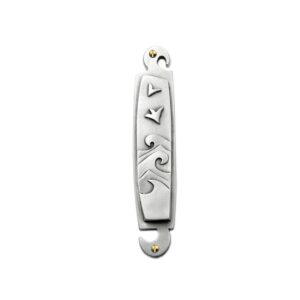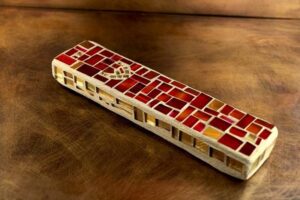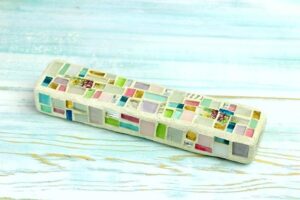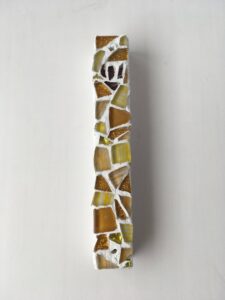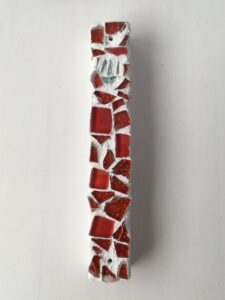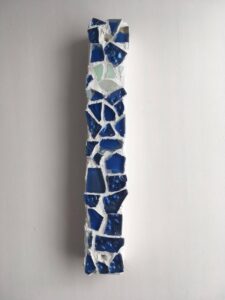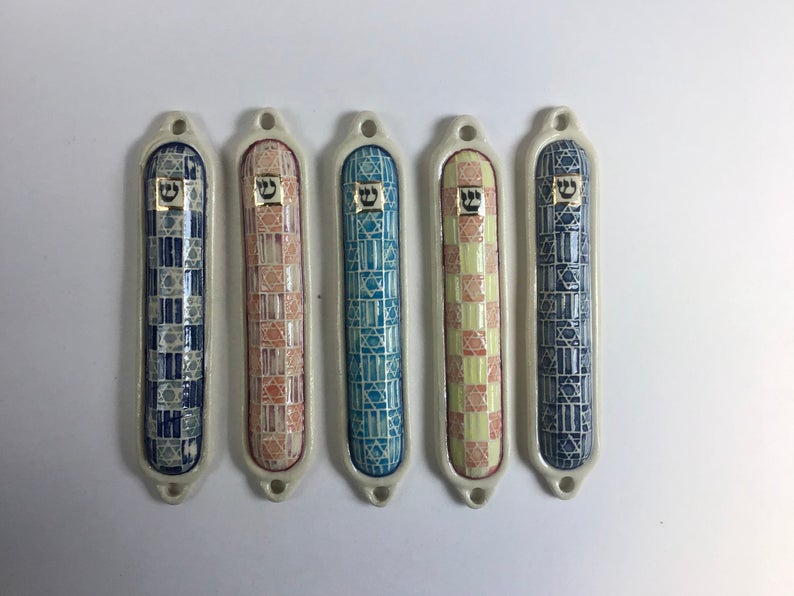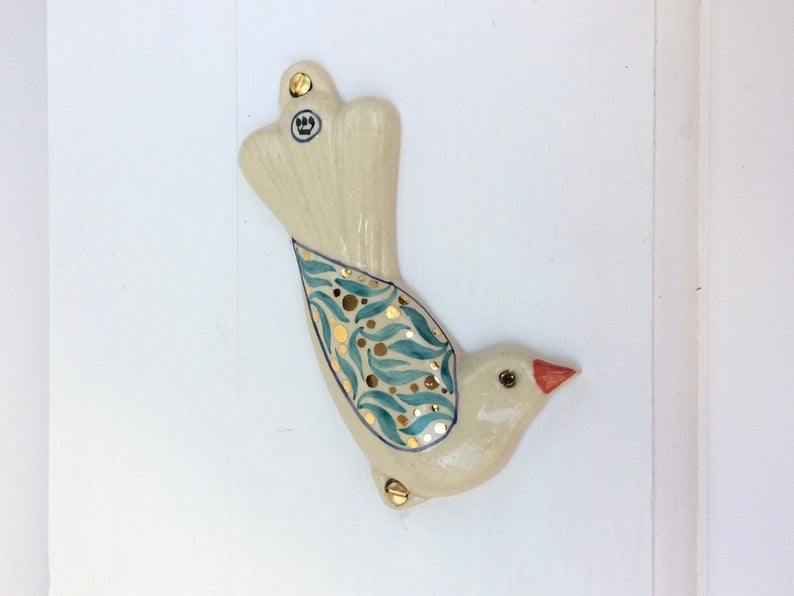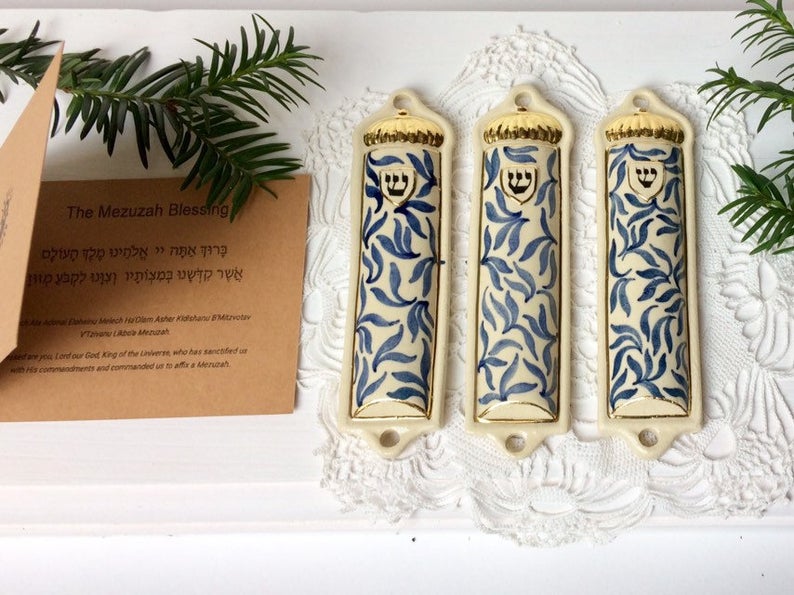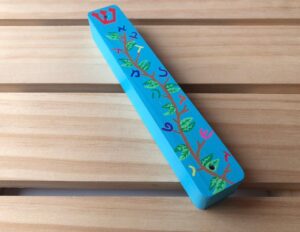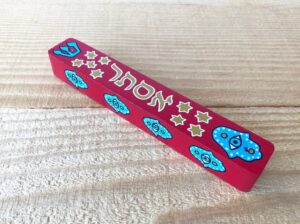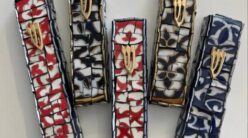When you live in a country where Jews are the minority you feel as if you were living in a Jewish museum when you have friends and acquaintances over pointing at your Judaica collection while asking you what the various items are and what they are used for in your home rituals. One of the objects people are most intrigued by are the Mezuzot decorating our door posts.
Mezuzot have their origin in the bible and are therefore very important for Jews all around the world. A Mezuzah doesn’t only refer to the decorative case that is affixed on our doorposts but to the parchment inside of it as well. Every time we enter or leave a room, or through our main door, we are reminded about our relationship with God as two biblical passages are written on to the parchment. The first one is Deuteronomy 6:4-9 and the second one 11:13-21.
There are very specific rules that need to be followed when the scroll is written. The person writing it must be a Jewish ritual scribe specialising in it, using a specifically prepared parchment paper as well as a very specific quill and ink as prescribed by tradition.
The scroll must be rolled from left to right in order to be able to see the first words when it is unrolled again to check if it has been damaged over the years. This also means that the Mezuzah case should never be sealed permanently as you should reopen it twice in seven years to examine it. If the letters have faded or the parchment scroll has been damaged in any way, it has to be exchanged. Should you be unsure where to purchase Mezuzah scrolls, we urge you to get in touch with your local rabbi as they will be able to point you into the right direction.
The Mezuzah case is something you could create yourself. Don’t worry, if you aren’t artistic. There are very talented artists and designers that specialise in Judaica art whose work is truly beautiful you can purchase from.
There are no rules regarding how many Mezuzot you need in your home as it depends on how many rooms you have that require one. Bathrooms, closets, laundry rooms, and so on, do not require one for example. If you are unsure how many you need and where to hang one, especially when it comes to rooms such as kitchens, we suggest checking with your local rabbi as they will be able to help you best.
While not every room requires a mezuzah, it is recommended to put your Mezuzot up as soon as possible after moving into your new place. Preferably within the first month.
The Mezuzah is always affixed in a slight angle towards the room in the lower part of the upper third on the right side of the door entering the room.
Affixing a Mezuzah doesn’t take long. All you have to do is say the following blessing, preferably in Hebrew if you can, and securely affix the Mezuzah:
“Blessed are You, Lord our God, Sovereign of the universe, who has sanctified us with His commandments and commanded us to affix a mezuzah.”
Shop: DoritsArt
Photos: Courtesy of ETSY
Shop: EmilyRosenfeld
Photos: Courtesy of ETSY
Shop: EnnyMosaic
Photos: Courtesy of ETSY
Shop: HolyMezuzah
Photos: Courtesy of ETSY
Shop: JudaicaHungarica
Photos: Courtesy of ETSY
Shop: LeaJoelleHandmade
Photos: Courtesy of ETSY


